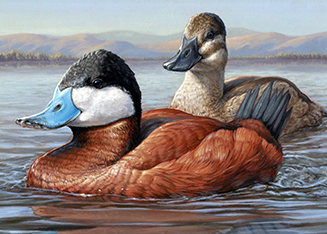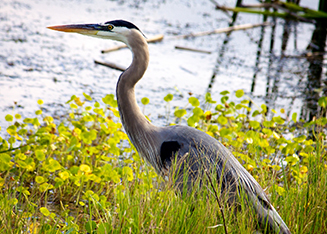Bird Identification
What is that Bird?
Do you wonder what the bird you are seeing is called? How many birds do you know by sight or by sound? Can you identify a bird by the way it flies? What type of birds would you expect to find in a grassland habitat?
The first step in bird identification is learning to observe. Watch and listen. It often helps to record your observations in a journal using descriptive words, sketches or drawings. Photographing birds is another way to capture a permanent record of what you have seen so you can study it later.
If you are just starting to watch birds, a great place to begin is to become familiar with the birds you see on a daily basis. What are their general characteristics? Are they big or small, colorful or drab? Do they sit still or flit from branch to branch?
Comparing other birds you see with common birds you know can help with identification. Being able to compare the size of an unfamiliar bird to one that you know is helpful. Is your new discovery the size of a sparrow, robin or crow? Is its bill short or long, hooked or straight?
Learning the basic form and structure (or morphology) of a bird will help you to compare different types of birds and concentrate on the shape and size of the bill; length of the tail, legs, and neck; and other field marks. It will also help you to think about what types of habitat you are most likely to find specific birds in. Availability of specific habitat types may limit where a species can be seen. Many birds you see may be migratory and will only be in your area at a specific time of the year.
Some people can identify a bird just by its song or call. Once you start to listen to the calls around you, you will start to learn them too. Do you know any mnemonicsthat help you identify the bird?
Can you distinguish differences in rhythm, pitch, tone and repetition? Studying the behavior of a bird is also often helpful to learning its identity. It is also an important aspect of bird conservation and management. Because birds move around, they can be vulnerable to a variety of different threats.
The following websites are ones we have found helpful to learning more about bird identification.
http://www.birdwatchersdigest.com/bwdsite/learn/identification/index.php
http://feederwatch.org/learn/tricky-bird-ids/
Taking your bird identification skills to the next level may include using different tools, going to different areas, or becoming involved in different bird related projects.
There are many resources to help young birders learn to identify different birds. If you are already a seasoned bird watcher, review these sources and programs for some ideas on how to get the next generations hooked on birding.
Whatever resources you use to identify birds around you, remember that the most important thing is to have fun. We hope you continue to enjoy birds and birdwatching - visit our Get Involved section to learn more about how you can help conserve birds!


